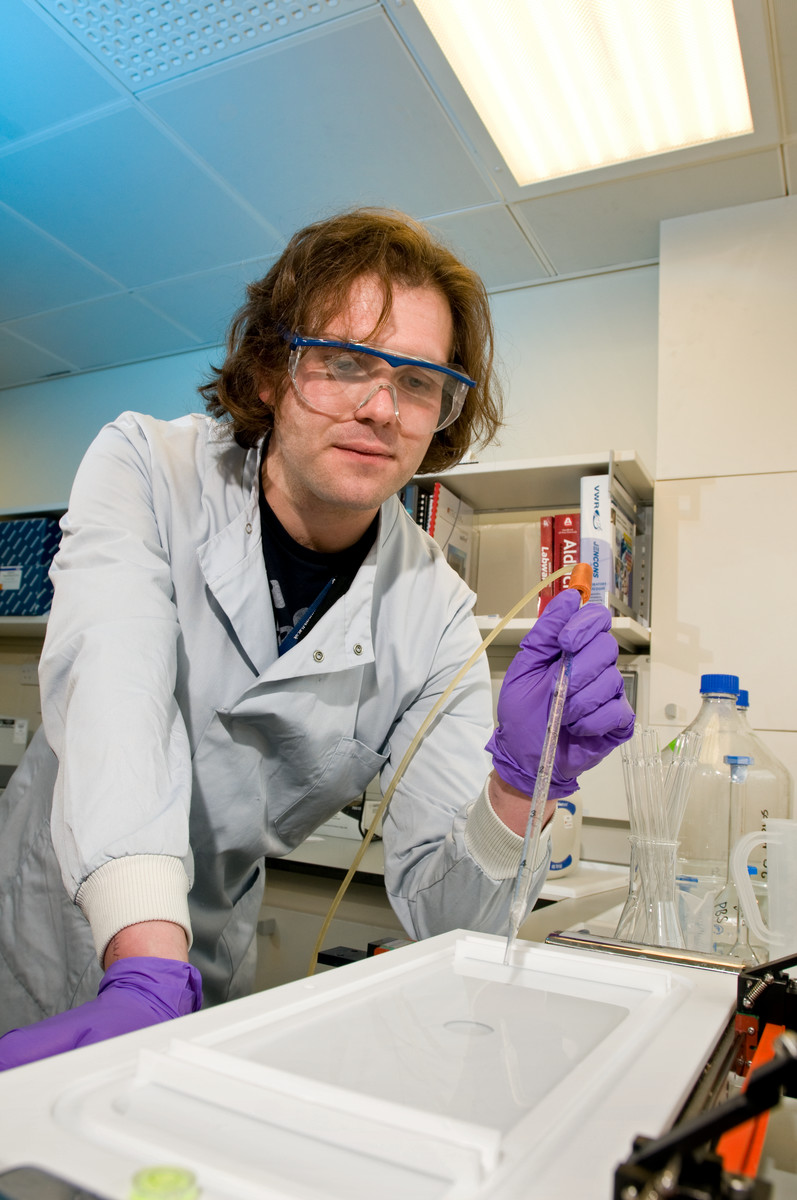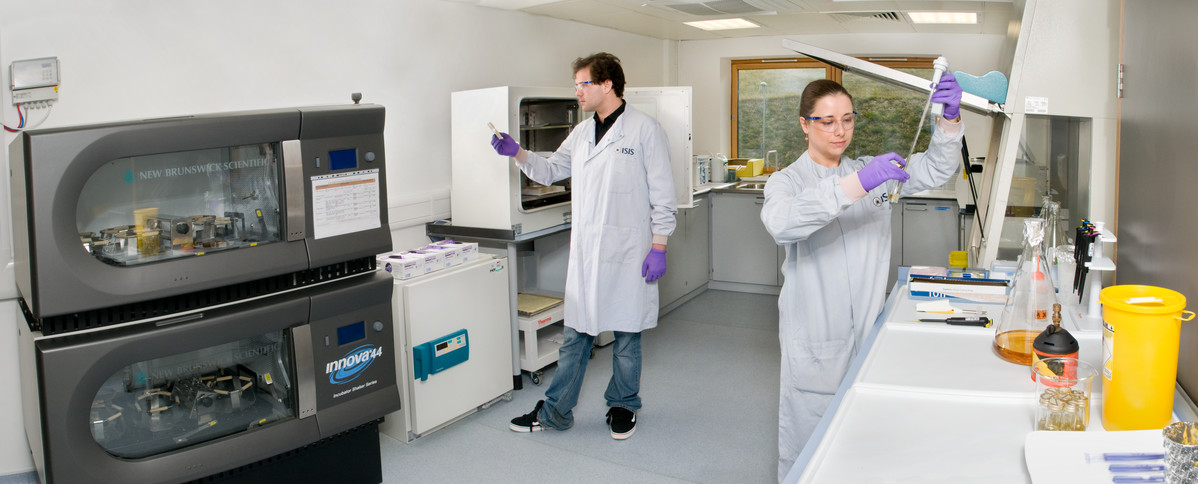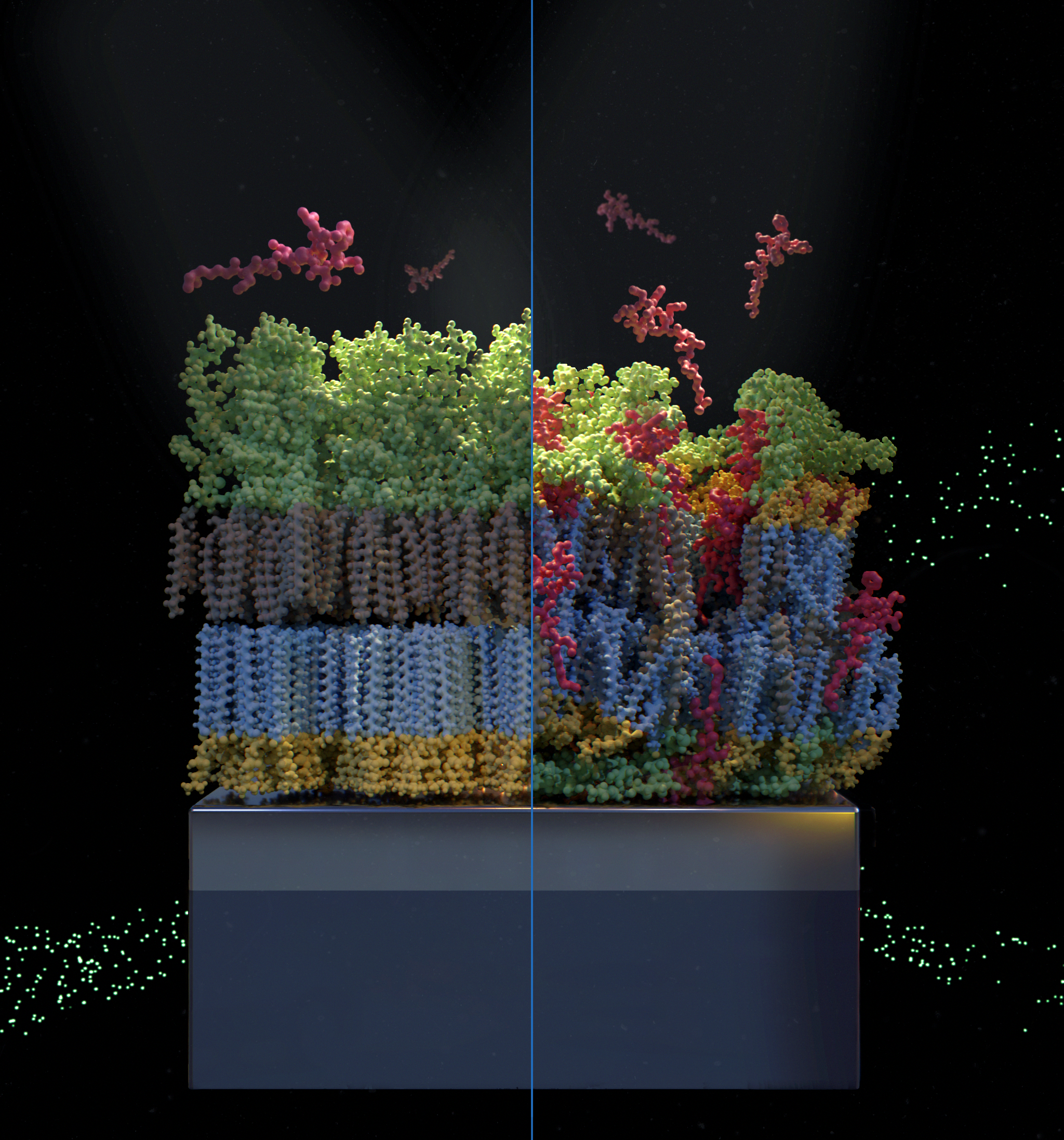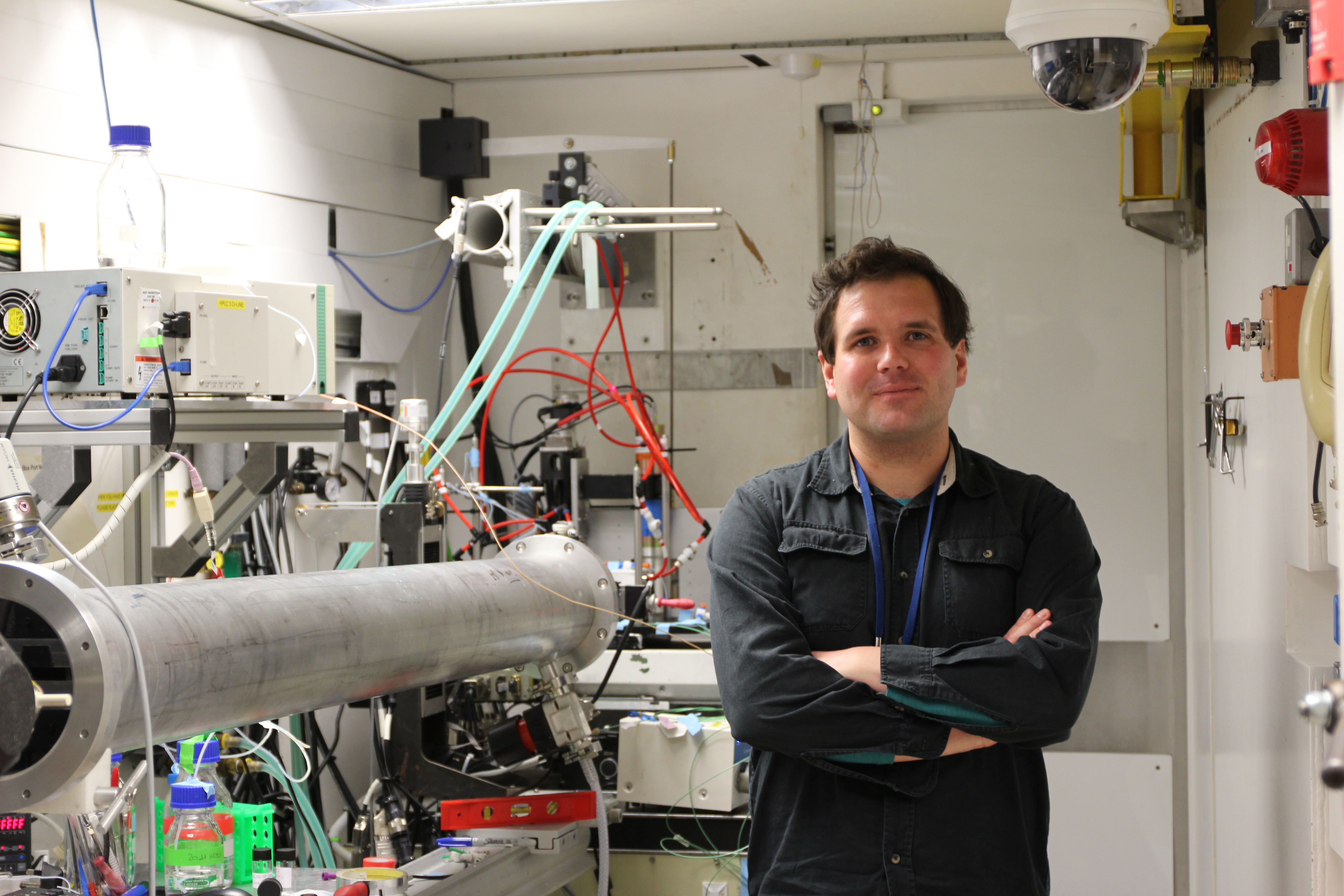Ten years ago, we featured some research by Luke Clifton on using neutron reflectivity data to investigate the membrane interactions of antimicrobial proteins found in wheat. This article follows this research theme (and Luke's career) since then.

Luke joined ISIS in 2008 after finishing his PhD at the University of Reading in biophysical chemistry. During his PhD, he had been working on the lipid binding properties of plant seed defence proteins using infrared spectroscopy, surface pressure measurements and neutron reflectometry with Richard Frazier and Rebecca Green.
Luke joined the new Biolab at ISIS, with his main role to make biological samples suitable for structural studies by SANS/NR for ISIS users. As part of that work, he continued to work on plant seed defence proteins with his PhD supervisors, including the work that featured in our 2010 article with his PhD supervisors.
Neutrons are particularly suitable for biological research as their energies and wavelengths are appropriate for probing a range of biological structures, from small molecules such as lipids or peptides, to larger molecules and molecular assemblies. As they are electrically neutral, neutrons can travel deep into materials and are non-destructive.
Another important advantage is that neutrons interact strongly with hydrogen nuclei, including those in water molecules. This is in contrast to X-ray analysis, where the electrons in an atom reflect X-rays, and so hydrogen atoms are hard to see. Determining the precise location and orientation of the hydrogen atoms in a molecule is usually crucial to understanding its biological behaviour.
From 2010, Luke had increasing opportunities to be an instrument contact, enabling him to learn more about scattering techniques and to optimise the process by which ISIS takes ideas into samples, experiments and then meaningful results.
Through his then colleague Stephen Holt (now at ANSTO), Luke started working with Jeremy Lakey from Newcastle University on proteo-lipid monolayers with applications to understanding the functionality of the membrane of E-coli bacteria cells. During an experiment at the advanced photon source, the group (consisting of Stephen, Jeremy and Anton le Brun) were able to show that you could make layers of extracted bacterial surface lipids (known as lipopolysaccharides) and gain precision molecular information.
“I thought this was very neat and novel as it was unusual at the time to work on direct biological extracts in biophysical studies," Luke explains. Using the equipment in the biolabs, he assembled a prototype model bacterial membrane and used some beam time on the CRISP reflectometer to look at the structure of the membrane. “It looked pretty good as a mimic of the bacterial outer surface."

 Dr Luke Clifton and Louise Hatter at work in the Biolab Cell Culture Laboratory in ISIS's TS2 facility at STFC's Rutherford Appleton Laboratory, 30th August 2012
Dr Luke Clifton and Louise Hatter at work in the Biolab Cell Culture Laboratory in ISIS's TS2 facility at STFC's Rutherford Appleton Laboratory, 30th August 2012This led to a larger study, which involved other ISIS staff, including Max Skoda, and collaborators from Newcastle University and ANSTO, which developed these accurate model bacterial assay systems. They led the research on the assembly of these systems, and carried out studies and studies using them to understand the fundamental behaviour of the membranes.
“A lot of this was born out of a desire to make a good assay system for studying the plant proteins (as featured by ISIS in 2010) but, by this time, the model bacterial system itself had taken centre stage" he says. “I then began working with my colleague Arwel Hughes, Jeremy and Stephen to create a free floating version of the bacterial surface models using sample technology they had recently developed for floating membrane models."
This proved quite successful, and they were able to show that they had made a functional, accurate membrane model that recovered the behaviour seen in the live cells, but was amenable to structural characterisation.

“Around 2016, I was promoted to a role helping drive the bio/membrane science at ISIS and, since then, the models of the Gram negative bacterial surfaces have taken on a life of their own!" explains Luke. “Partly through the efforts of Nico Paracini, a joint PhD student between myself and Jeremy (who is now working at Malmo University), who did some great work using these model systems to give a precision understanding of the activity of antibacterial drugs, as well as the more general use of these models in the user community."
One issue that they noticed with their accurate bacterial models is how difficult they are to assemble. This means a lot of specialist equipment and expertise is required, as well as training, before someone can be successful fabricating the model biological system.
Recently, they have been working on making membrane systems for the user community, and other research groups, which have the realistic behaviour of the membranes found in cells, like our floating bacterial membranes. They recently synthesised floating membranes that can self-assemble onto surfaces and therefore don't require the complex assembly processes needed in the previous models and are using these systems to structurally examine a range of membrane related phenomena.
The research has now developed far enough that it has gone full circle, back to plant seed defence proteins. Luke has recently recruited a new PhD student, Laura John, co-supervised by himself, Mark Sansom and Gail Preston at the University of Oxford. She will start examining the interaction of plant seed defence proteins with pathogen membrane models using this system.
So, it just goes to show how much can change in ten years! Maybe in at the start of 2030, we'll be back with Luke to discuss the latest in biological membrane research…?

